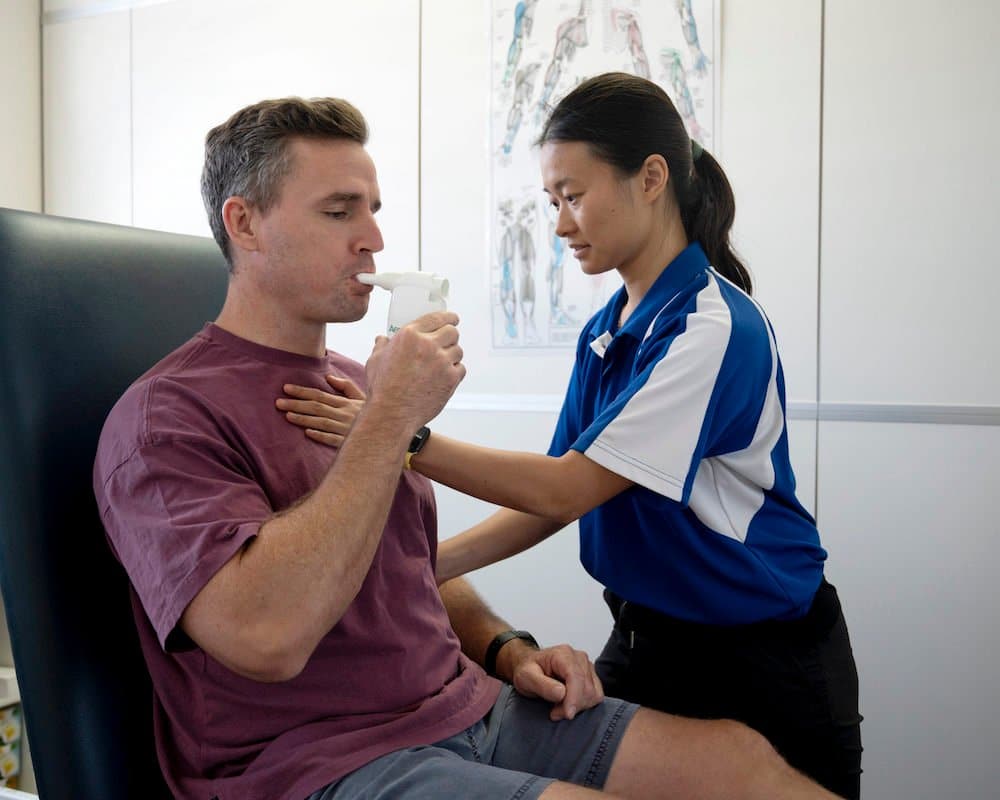
Chest physio plays a significant part in improving lung function and overall respiratory health. As a result, it provides a wide variety of essential advantages to those suffering from various respiratory disorders. The enhancement of one’s ability to breathe more efficiently is one of its key benefits. Chest physiotherapy helps patients clean mucus and secretions from their airways by guiding them through specialised techniques and exercises. This, in turn, makes the process of inhaling and exhaling smoother and more efficient.
Would you like to know more about chest physio and Como physio? Keep reading!
What is Chest Physio?
It is one of the specialised treatments focusing on a promising therapeutic approach to improving respiratory functions through various exercises and techniques. Doing these methods can greatly help through postural drainage, positive expiratory, percussion, and other breathing exercises.
Additionally, doing positive expiratory pressure (PEP) therapy and chest therapy is indeed helpful when it comes to preventing lung infections and maintaining airway clearance to promote better overall lung health. Chest therapy has a significant goal: to aim for more enhanced oxygen exchange and a more substantial improvement in lung expansion. Conditions like cystic fibrosis, bronchiectasis, and even post-surgery recovery are also on the coverage of this kind of physiotherapy.
Why is Como Physio Recommended?
Individuals looking for physical therapy and rehabilitation should strongly consider using physiotherapy services, such as those provided by Como Physio, for a number of compelling reasons that make them the best option available. In the first place, physiotherapy clinics often staff highly trained, experienced, and knowledgeable physiotherapists who are widely recognised as authorities in their respective fields. Because of their extensive knowledge and experience, a wide variety of musculoskeletal and physical health disorders can be precisely evaluated, accurately diagnosed, and treated in an efficient manner.
Benefits of Chest Physiotherapy
Chest physical therapy treats a variety of ailments and illnesses, intending to improve respiratory function and health. Chest physical therapy focuses on several crucial areas, including chronic obstructive pulmonary disease (COPD), cystic fibrosis, bronchiectasis, asthma, pneumonia, and respiratory infections, which are just a few illnesses often managed and treated using chest physical therapy.
Here are the benefits that chest physio offers:
- Mucus Clearance
Chest physiotherapy effectively eliminates extra mucus and secretions from the airways, lowering the risk of lung infections.
- Atelectasis
This term is used to describe the partial or total collapse of a lung or a portion of it. Chest physical therapy facilitates lung expansion and opens airways to prevent atelectasis.
- Recovery Following Surgery
After thoracic or abdominal surgery, patients may have reduced lung function due to pain and restricted mobility. During the recuperation stage, chest physical therapy aids in avoiding complications like infection and lung collapse.
- Ventilation Improvement
Chest physiotherapy aids in improved ventilation and oxygen exchange inside the lungs by enhancing lung expansion and airway clearance.
- Enhancing Lung Function
Chest physiotherapy can raise lung capacity and improve overall lung function, which benefits people with weakened lungs.
- Support for Ventilation
Chest physiotherapy can help patients receiving mechanical ventilation keep their airways free and avoid problems brought on by prolonged ventilator use. Physiotherapy is a crucial part of respiratory care in critical care units, where patients frequently have diminished lung function due to their illness or prolonged immobility.
- Children’s Respiratory Health
Chest physiotherapy can help paediatric children with disorders like cystic fibrosis or recurring respiratory infections avoid problems and promote lung development. Chest physiotherapy controls symptoms, lessens exacerbations, and maintains lung health in chronic lung diseases like COPD.
Popular Techniques for Chest Therapy
Here are ten popular exercises frequently performed in chest physical therapy:
- Percussion
Lightly tapping or clapping with cupped hands on the chest and back helps break up mucus in the airways, making it simpler to cough out.
- Vibration
Moving mucus for elimination is aided by vibrating the chest wall manually or with a handheld instrument.
- Breathing Exercises
Exercises that involve deep breathing include controlled deep inhalations and exhales that assist in expanding the lungs and increasing oxygen exchange.
- Position
Different body positions are utilised in postural drainage to help gravity move mucus from smaller airways to bigger ones for more straightforward clearance.
- Oscillatory Positive Expiratory Pressure (OPEP) or Flutter Valve Devices
During exhale, these devices provide vibrations that aid in moving mucus towards the airway entrance and shaking it loose.
- Positive Expiratory Pressure (PEP) Therapy
This technique involves breathing against resistance to keep the airways open and promote mucus clearance.
- Huffing or Forced Expiratory Technique
Driving mucus towards the mouth for evacuation with a controlled, powerful exhale while keeping the glottis open.
In Summary
Chest physio is a significant pillar in pulmonary treatment since it uses some methods and workouts specially designed to enhance lung condition and fundamental lung function. Everyone benefits significantly from thorax physical therapy, from those who are recovering through surgery to those battling chronic lung diseases like cystic fibrosis and COPD. Using methods including a percussion instrument vibration, attitudinal drainage, and other respiration exercises, this therapy method aids in removing mucus, preventing infections, and promoting normal lung expansion.
